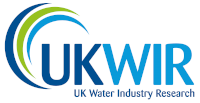Focus on Carbon Reduction
23/08/2022
Ofwat has said its next price review will introduce incentives to reduce carbon emissions and “challenge companies to identify the most impactful, best value solutions towards net zero”.
Through our Big Question “How do we remove more carbon than we emit by 2050?” we have produced industry-leading research, which will support companies across the UK & Ireland to better understand their carbon footprint so they can develop and deliver solutions to reduce it while delivering additional benefits to the environment.
Dan Green, UKWIR’s Programme Lead for the Carbon Big Question, said: “UKWIR’s work is crucial for water companies across the UK and Ireland to achieve their carbon reduction commitments and help slow the impacts of climate change for future generations. Remaining resilient in the face of potentially very different futures is a big challenge, and UKWIR’s soon to be published report (Reference: 22/CL/01/34) revisiting how we identify climate-related risks will be invaluable to our adaptation efforts.”
Land carbon sequestration tool – UKWIR report 21/CL/01/31
Ambitious targets to deliver net zero carbon emissions before 2050 cannot be achieved by reducing emissions alone, legitimate sequestration of carbon is also needed. Water companies need to consistently and accurately account for and report the greenhouse gas (GHG) emissions associated with their land holdings and land management practices.
UKWIR worked with the UK Centre for Ecology and Hydrology, who developed a land carbon sequestration tool, based on internationally accepted methods for quantifying carbon sequestration and emissions from land and water, to help companies assess the impact of future changes to land use scenarios on GHG emissions over 50 years.
The research revealed most land uses are net emitters of GHGs, including reservoirs, which have higher emissions than previously thought. The main land uses that capture carbon are: forests, semi-natural bogs and fens in good condition, short rotation coppice and agroforestry. The findings also show there are more options available to cut emissions, including reductions in nutrient inputs to reservoirs.
The report recommended water companies use the tool to estimate baseline carbon stocks, GHG emissions and sequestration to land.
Calculating whole life / totex carbon – UKWIR report 22/CL/01/32
Over the last 15 years water companies have been developing tools to reduce their carbon footprint, including measuring the carbon footprint over the lifetime of an asset. Measuring whole life carbon is difficult to do, and capital carbon receives less attention than operational carbon emissions.
In collaboration with Stantec, Mott MacDonald and Professor Kamal Birdi at Sheffield University, we carried out a high-level review of the assessment methods currently used by the water sector. The review considered the potential for integrated ‘totex carbon’ calculation and assessed the appetite amongst potential end users for whole life carbon planning tools. This report builds on previous work by UKWIR: 12/CL/01/15 – A framework for accounting for embodied carbon in water industry assets.
The project identified several gaps in industry knowledge and capability, which are set out as a series of recommendations for UKWIR and the industry to address through future collaborative research.
These include: encouraging the supply chain to adopt a consistent carbon reporting approach, standard carbon emissions factors for the most common items companies consider in investment planning (such as the materials, energy, mechanical and electrical plant items used in construction and maintenance of conventional assets), as well as other items used in implementing novel or nature-based solutions.
